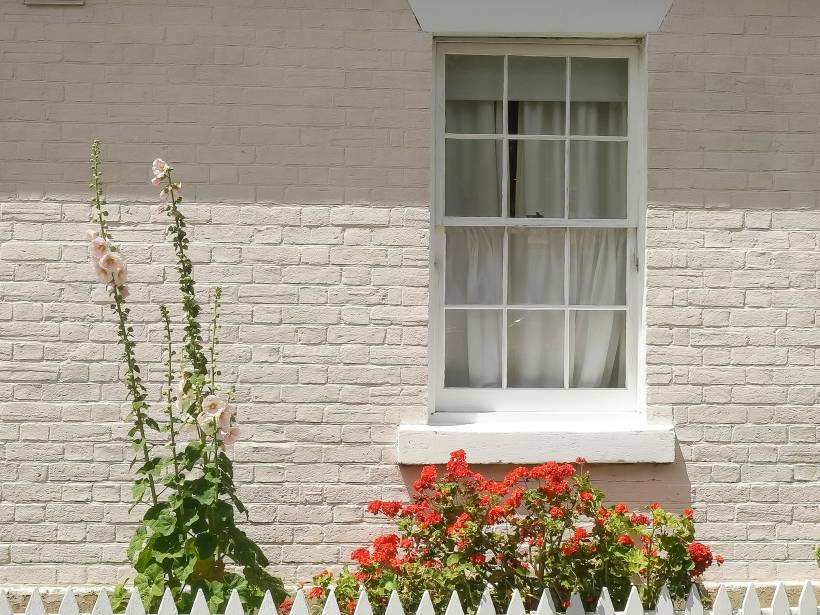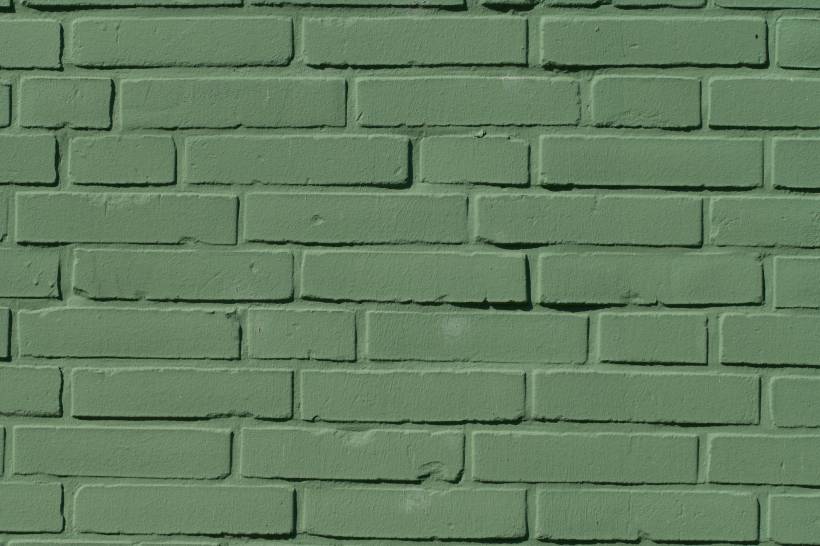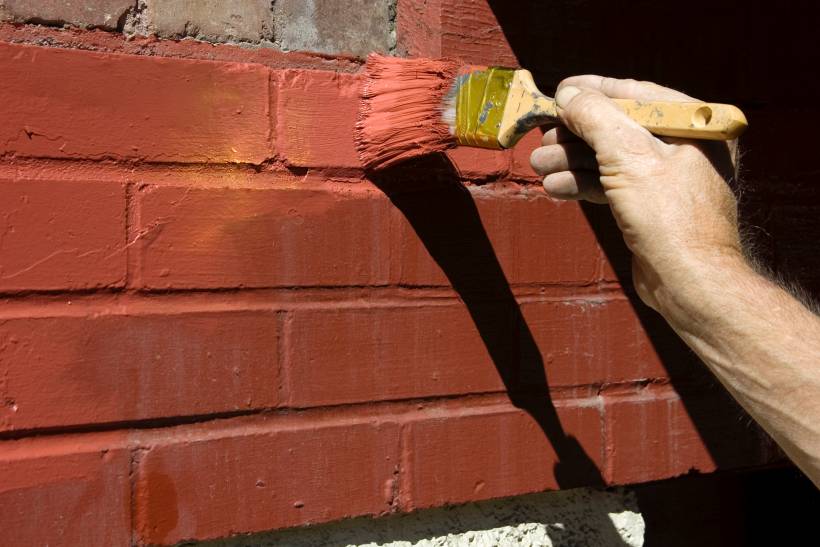Picture this: the humble picket fence, standing at the edge of your property, often overlooked by passers. Your fence is the boundary between your home and the outside world. Yet, despite its functional role, a fence possesses the untapped potential to be more than just a barricade but a canvas waiting to be worked on.
In this guide, we’ll delve into the art of fence painting and explore how a fresh coat of paint can easily and effectively turn your fence from plain and ordinary to eye-catching.
14 Fence painting ideas you can try
1. Two-tone aesthetic
One of the easiest ways to elevate your fence’s appearance is by embracing the timeless charm of a two-tone aesthetic. You can use two contrasting colours to create a visually striking, well-defined look for your fence.
Examples of two-toned duos include black and white fence paint, grey and white, or even a play of earthy colours like brown and dark brown. You can use shades of the same colour family for a more harmonious look.
2. Natural wood stain

A natural wood stain is the perfect choice for those looking to let the true beauty of their fence material take centre stage in an outdoor setting. Unlike solid paint colours that may conceal the inherent characteristics of wood, a natural wood stain enhances the material’s unique features while providing essential protection.
3. Refresh it with unique patterns
Take your fence-painting adventure to the next level by getting extra creative with unique and eye-catching patterns.
Fun and striking patterns reflect your personal style and creativity, adding that unique charm to your property. Whether you want a sophisticated herringbone or a playful polka dot, refreshing your fence with patterns is a surefire way to catch people’s attention and turn your outdoor space into your personal canvas.
4. Get the kids involved

For a special touch, get the little ones involved when painting a fence! This project is not just about transforming your outdoor space; it’s an opportunity to create lasting memories and instil a sense of creativity in the younger members of your household.
5. Cosy it up with sage
Painting your fence sage or similar shades of green adds a touch of warmth and cosiness to your outdoor space. Not only does it match the natural outdoor setting, but it brings a sense of tranquillity and makes your backyard seem larger.
6. Traditional whitewash

You don’t always need to go big if you want to make a change. Sometimes, going for the tried-and-true way is good enough. Few techniques can rival the whitewash finish. It’s understated, elegant, and rustic without being too bold or flashy and is a classic example of how simplicity can bring something game-changing to the table.
7. Embrace the neutrals
Colour palettes like brown, beige, and grey can offer a natural and earthy vibe to your outdoor space and are perfect for homes in the countryside or houses surrounded by nature. These hues blend well with the environment rather than clashing with it.
For decor purposes, neutral-toned fences easily complement wooden furniture, planters, and other organic elements, creating an enhanced and cohesive yard space.
8. Make it pop with bold colours

This idea might be a bit bold for some, but it’s all about creating an outdoor space that resonates with your personality and evokes a sense of joy–something that can make you stop and smile about.
Incorporating bold and modern fence paint colours can add a vibrant touch to your outdoor space. You can choose bright colours or muted ones for a more subdued tone.
9. Colours by the beach
Do you enjoy the ocean or have a liking to the colour blue? A fun idea can be to paint your fence different shades of blue to mimic the waves and give a coastal feel to your outdoor space. This creative choice not only brings a refreshing look to your home but also creates a soothing backdrop that resonates with the feeling of being near water.
10. Rustic chic

Want to achieve a more lived-in facade? Embrace and celebrate the graceful wear and tear that naturally occurs on your fence over time. Instead of viewing it as a sign of ageing, consider it a testament to the enduring character of the wood. You can paint your fence to intensify the wear and tear look if you have a relatively new fence installed.
11. Mural backdrop
Do you or anyone you know have what it takes to paint a jaw-dropping backdrop in your yard? If your goal is to make a bold statement without putting a dent in your bank, then there’s nothing more impactful than a mural. This lively aesthetic heavily relies on personal preference, so every job will surely be unique!
12. Warm hues like autumn

For a seasonal touch, try painting your fence warm hues like deep reds, oranges, dark yellows, and browns. This quick and easy update captures the season’s essence, adding an inviting and cosy outdoor atmosphere to your home.
13. Garden illusion
Another unique take to give your fence a makeover is by painting intricate vines and lush greenery that appear to climb and cascade down the length of the fence. You can even partner it with real vines, blooming flowers, plants, and other natural decor accessories for an added touch.
14. Monochrome magic

This monochromatic painting method is simple yet a big update, leveraging various shades of a singular colour to achieve a harmonious and sleek palette for your fence. Black and white can be an example of base colours, with something like a woodland grey fence paint serving as the different shades in this colour palette spectrum.
The beauty lies in its versatility; regardless of the colour you’ve picked, the result is a refined and cohesive aesthetic that effortlessly blends with your outdoor surroundings.
Tips when painting your fence

Do research and explore painting techniques and styles
Before you commit to a specific look for your fence, it’s important to delve into different painting techniques and styles to ensure your choice aligns with your aesthetic preferences and the overall theme of your outdoor space.
It’s also a good idea to consider the type of fence you currently have in your research. Paint for a regular picket fence may require more thought than Colorbond fence paint, for example, due to a difference in material composition.
Choose the right paint colours
After deciding on a theme for your picket fences, settle on the paint palettes you’ll use on the surfaces. Giving this careful thought can improve the overall painting experience since it makes the job more effective and minimises wasted time, redos, and other unpleasant surprises.
Consider the weather in your area
When selecting paint palettes for your picket fences, it’s essential to consider the specific weather conditions in your area. For example, in areas prone to high humidity or rainfall, opt for moisture-resistant paint to prevent issues like mould and peeling.
Extreme temperatures, whether hot or cold, can impact paint durability, so choose high-quality exterior paint designed for your region’s climate. If your location experiences distinct seasons, consider how your chosen colours will appear throughout the year, factoring in lighting conditions and changing landscapes.
Think about long-term maintenance
Consider how often you’ll maintain how the fence looks. A lighter colour may show dirt more visibly but features a fresh and clean appearance. For instance, darker colours may be more forgiving regarding stains but might absorb more heat.
Make it a welcome addition to your neighbourhood
Take a subtle cue from the neighbouring properties. While you want your fence to stand out and catch the attention of others, it shouldn’t clash with the general aesthetic of the neighbourhood and contribute to the area’s sense of unity.
How do I maintain my newly painted fence?

Maintaining your newly painted fence is crucial to preserving its aesthetic appeal and longevity. Additionally, starting a project with high-quality products and brush techniques can help maintain the vibrancy and durability of your fence’s paintwork.
Choose quality paint
Invest in premium-quality paint and brushes from the start. High-quality products provide better coverage and offer enhanced protection against the elements.
Be sure to clean your fence before applying paint
To ensure long-term results, be sure to clean the fence site. Before applying the first coat of paint, thoroughly clean the fence surface and let it dry completely. Afterwards, sand the surface to create a smooth and even texture. Sanding helps remove rough spots, imperfections, or old paint that could affect the new coat’s adhesion.
Be mindful of the chemicals being used
The relationship between paint and chemicals, such as herbicides or insecticides, can lead to adverse effects, including discolouration and damage. These substances often contain potent ingredients that may react with the paint’s composition, compromising its integrity and visual appeal.
Protect it during extreme weather
Storms, heavy snowfall, and other severe weather conditions can affect the longevity of your fence in the long run, so protecting them during these times can significantly contribute to their durability.
You can achieve this by applying protective sealants, reinforcing its posts, and investing in windbreaks if you live in an area prone to strong winds. Temporary coverings, like tarps or plywood, can also make for effective shields for your fence.
Consider regular professional inspection
Periodically request a professional inspection of your fence. Hiring painters with a skilled eye can identify potential issues early on, allowing for timely repairs, maintenance, and proper upkeep of your fence.
Is it better to DIY or hire a professional painter?
If you’re still on the fence (get it?) about deciding to work on the project yourself or seek the help of a professional painter, you can make an informed decision based on several key factors, including skill capacity, time, budget, and complexity of the paint job.
Doing the project yourself can help save money since you avoid the labour costs usually associated with hiring a professional. It also gives you full creative control over the project, letting you do things your way.
While it’s a budget-friendly and autonomous way of approaching a fence painting project, it comes with a few cons worth looking into.
On the other hand, hiring a professional painter for the job can take this time-consuming task off your plate. Due to the nature of their job, you are assured of having a finished product handled efficiently by someone with the right experience and skills.
Hiring professionals comes with labour costs. But the extra costs can be worth it in exchange for a professionally painted fence.
Deciding between DIY and professional painting depends on your priorities, skills, and circumstances. DIY might be a fulfilling venture if you relish the hands-on experience, have the time, and enjoy the creative process. If time, quality, and convenience are your priorities, enlisting the help of professionals ensures a well-executed result.
Think outside the fence!
Regardless of how you go about it, refashioning your fence takes a lot of work. You can consider the ideas above for your next fence painting project.
If you’re still unsure about being hands-on with this project, you can always call a professional painter to do the job for you. With their expertise in the task, you can get visually appealing results and even valuable insights or recommendations on the best approach for your specific fence.
FAQs on painting fences
Is it better to spray or paint a fence?
Ultimately, the decision between spraying and painting depends on the size of the project, your skill level, and the desired finish. Spraying can be efficient for large, relatively smooth surfaces, while hand painting is often preferred for intricate details or smaller areas.
Do you need to prep a fence before painting?
Absolutely, prepping a fence before painting is a crucial step to ensure a smooth and long-lasting finish. Proper preparation not only enhances the aesthetic appeal of the painted surface but also contributes to the paint job’s longevity.
Can I paint a fence myself?
Absolutely! Painting a fence yourself is a common and achievable DIY project. All you’ll need is the right set of tools, some quality materials, and a bit of time and effort.








